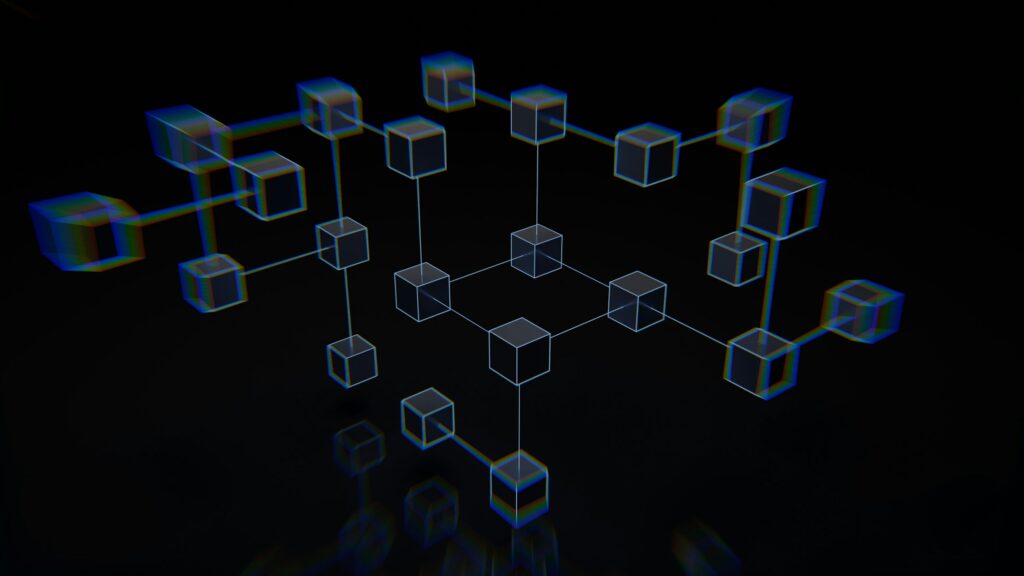The Internet is on the verge of change. Web3, the next development stage of the World Wide Web, promises a Decentralized web architecture and more control for users. This new era builds on Blockchain technology and relies on transparency and direct interaction without middlemen.
The Web3 Future of the Internet is characterized by innovative concepts. Users are given the opportunity to manage their data themselves and benefit from their digital presence. The Blockchain technology forms the backbone of this development and enables secure, traceable transactions.
The path to Web3 began with the static Web1 and led via the interactive Web2. We are now on the threshold of a digital world in which users not only consume content, but can actively participate in the network and benefit from it. This development promises a fairer digital economy and improved privacy.
Important findings
- Web3 relies on decentralization and user control
- Blockchain technology forms the basis for Web3
- Improved data control and privacy for users
- Development from Web1 to Web2 to the emerging Web3
- Potential for a fairer digital economy
The evolution of the Internet: From Web1 to Web3
The internet has changed dramatically over time. From simple websites to decentralized applications (dApps) - the development is impressive.
Web1: The era of static websites
Web1 dominated the Internet in the 1990s. Simple websites with text and images characterized this period. Online retailers such as Amazon and eBay offered their goods. Web1 made it possible to access information without having to physically visit a library.
Web2: The age of social interaction
Web2 saw the rise of social media platforms such as Facebook and Twitter. Blogging platforms such as WordPress gave everyone the chance to start their own blog. Online marketplaces such as Etsy and AirBnB experienced an upswing. Platforms for sharing videos and music, such as YouTube and Spotify, became popular.
Web3: The decentralized revolution
Web3 is based on blockchain technology and gives users more control over their data. Cryptocurrencies such as Bitcoin and Ethereum play a central role. The Token economy is gaining in importance. CoinEx, a global exchange, offers over 700 Cryptocurrencies to.
New Cryptocurrencies such as Pepe Unchained and Memebet Token are offered for pre-sale. Flockerz, a vote-to-earn coin, shows the potential of meme coins. The Metaverse opens up interactive, virtual worlds for companies.
Web3 represents a paradigm shift and is fundamentally changing the way companies interact with their target groups.
The development from Web1 to Web3 shows the change from one-way communication to a decentralized, user-driven environment. Companies need to adapt their strategies to take advantage of the opportunities offered by Web3.
Basics of Web3 and decentralized Internet
Web3 is revolutionizing the internet through decentralization and user autonomy. This new era is based on blockchain technology and cryptocurrencies. The semantic web plays an important role in linking information.
In contrast to previous versions Web 3.0 users full control over their data. Smart contracts automate transactions and make intermediaries superfluous. The transparency of the blockchain creates trust without a central authority.
Artificial intelligence and machine learning improve data processing in Web3. Open source software promotes innovation and collaboration. The decentralized internet promises more freedom and security for users.
"Web3 is the future of the Internet - user-controlled, transparent and secure."
Statistics prove the rise of Web3:
- 70% Growth in the use of Smart contracts
- 50% companies explore Web3 applications
- 30% more control over personal data for users
Web3 is fundamentally changing the way we interact digitally. It creates new opportunities for business models, data protection and global collaboration. The development is still in its infancy, but the potential is enormous.
Blockchain technology as the backbone of Web3
Blockchain technology forms the foundation for Web3 and the Decentralized web architecture. Since its creation in 2009 with Bitcoin, this technology has developed rapidly. It acts as a digital accounting system that securely stores and links blocks of data.
How the blockchain works
Blockchain is a Distributed ledgera public database for the secure recording of information in a computer network. The Ethereum network, launched in 2015, uses over 8,000 nodes for the protection and simultaneous processing of transactions.
Cryptography and security in the blockchain
The security of the blockchain is based on complex cryptography. This makes it possible to store and transfer information in a tamper-proof manner. Users can create and trade their own tokens, which forms the basis for decentralized finance (DeFi).
Consensus algorithms: Proof of Work vs. Proof of Stake
Consensus algorithms such as Proof of Work and Proof of Stake ensure the integrity of the network. They make it possible to validate transactions without a central authority. Despite the challenges of speed and scalability, Web3 offers solutions for modern Internet problems.
| Feature | Web3 | Traditional web |
|---|---|---|
| Architecture | Decentralized | Centralized |
| Data control | Users | The company |
| Transactions | Direct (peer-to-peer) | About intermediaries |
| Security | Cryptographic | Server-based |
Smart contracts: Automated contracts in Web3

Smart contracts are revolutionizing the way agreements are made in the digital space. These self-executing contracts are a core component of Web3 and enable automated transactions without intermediaries.
Nick Szabo developed the concept of smart contracts to execute contracts automatically. Since 2015, the Ethereum platform has supported this innovation and forms the basis for many Decentralized applications (dApps).
In the Token economy smart contracts play a decisive role. They make it possible:
- Automatic insurance payouts
- Efficient goods issue
- Improved access management
- Audit-proof management of sensitive data
Companies use smart contracts to optimize processes and reduce costs. The Fraunhofer Institute supports the development of innovative business models through the "Blockchain Reallabor" project.
The implementation of Smart contracts in decentralized applications (dApps) often takes place quickly and cost-effectively. This enables companies to position themselves as pioneers in the changing Web3 environment.
Smart contracts form the basis for a transparent and efficient Web3 ecosystem in which users regain control over their data.
Decentralized applications (dApps) in the Web3 ecosystem
Web3 as the future of the Internet is revolutionizing the digital world. Decentralized applications (dApps) play a key role in this. They use blockchain technology to give users more control over their data.
Differences between traditional apps and dApps
In contrast to conventional apps, dApps run on decentralized networks. This increases security and transparency. Users retain control over their data instead of handing it over to central platforms.
| Traditional apps | dApps |
|---|---|
| Centralized control | Decentralized structure |
| Data management by companies | User control over data |
| Susceptible to censorship | Censorship-resistant |
Popular dApps and their use cases
DApps are used in various areas. In decentralized finance (DeFi), they enable direct financial transactions without intermediaries. dApps are also becoming increasingly important in gaming and social media.
Development and implementation of dApps
The creation of dApps requires knowledge of blockchain technology and smart contract programming. Developers use platforms such as Ethereum to implement their applications. This enables efficient and cost-effective development compared to centralized apps.
DApps are changing the way we interact on the internet. They offer more security, privacy and control. The Web3 future of the internet promises a decentralized ecosystem that puts the power back in the hands of the users.
Web3 Future of the Internet: visions and possibilities
Web3 promises a revolution in the digital space. It is based on decentralized networks and uses blockchain technology to give users control over their data. The semantic web plays an important role in this by making information machine-readable.
The future of the Internet with Web3 offers exciting prospects:
- More privacy and data protection
- Fairer distribution of power and wealth
- Greater reliability thanks to decentralized structures
- More efficient transactions without intermediaries
- Inclusion of people without access to the traditional financial system

Distributed ledger Technologies such as blockchain form the backbone of Web3, enabling tamper-proof transactions and creating trust without centralized authorities. Smart contracts automate processes and make intermediaries superfluous.
Web3 strives to break the power of platform monopolies and put it back into the hands of the users.
In a Web3 world, social networks could be organized on a grassroots democratic basis. Users would benefit from their activities and share in the success of projects. Decentralized autonomous organizations (DAOs) could function as digital cooperatives.
| Web2 | Web3 |
|---|---|
| Centralized platforms | Decentralized networks |
| Data collection by companies | Data control by users |
| Dependence on intermediaries | Direct peer-to-peer interactions |
The vision of Web3 promises a fairer, safer and more efficient internet. It could fundamentally change the way we interact, do business and exchange value online.
Decentralized finance (DeFi) and cryptocurrencies in Web3
The Web3 revolution is bringing fundamental changes to the financial sector. Decentralized finance (DeFi) and cryptocurrencies are reshaping the digital economy. DeFi protocols allow users to access financial services without centralized institutions.
Cryptocurrencies form the backbone of the Token economy They enable fast, cost-effective transactions across national borders. Blockchain technology ensures transparency and security.
Non-fungible tokens (NFTs) open up new possibilities for digital property. Artists can market their works directly, while collectors can acquire unique digital goods. These innovations are changing the art and entertainment market for good.
"Web3 and blockchain are revolutionizing finance. They are giving users back control over their data and assets."
The development of DeFi and cryptocurrencies is still in its infancy. Experts are forecasting significant growth in the coming years. However, there are also challenges to overcome, such as regulatory issues and security risks.
| Aspect | Traditional finance | DeFi / Web3 |
|---|---|---|
| Control | Centralized | Decentralized |
| Transaction speed | Slowly | Fast |
| Costs | High | Low |
| Accessibility | Restricted | Global |
Data protection and security on the decentralized web
The Decentralized web architecture of Web3 brings with it new challenges for data protection and security. Users gain more control over their data, but new risks arise at the same time.
Improving user control over personal data
Web3 enables users to write, read and take responsibility for their data. Blockchain technology forms the backbone for secure transactions and decentralized financial services. Smart contracts allow users to determine how their data is used.
Data security challenges in Web3
Despite improved controls, Web3 harbors new security risks. Attacks on crypto wallets and NFTs are on the rise. Security vulnerabilities in smart contracts can lead to significant financial losses. The anonymization of data in the blockchain also raises data protection issues.
Regulatory aspects and compliance
The regulation of Web3 technologies poses a major challenge. Existing laws must be adapted to the decentralized structure. Companies are faced with the task of implementing compliance requirements in a decentralized environment.
| Aspect | Web2 | Web3 |
|---|---|---|
| Data control | Centralized | Decentralized |
| Security risks | Known | New and complex |
| Regulation | Established | In development |
Challenges and obstacles for the mass adoption of Web3
The Web3 Future of the Internet promises a lot, but there is still a long way to go before it is widely used. One of the main obstacles is the complexity of the technology. Many people find it difficult to understand the concepts behind blockchain and decentralized applications (dApps). This leads to reluctance to use new services.
Another problem is scalability. While the weekly DEX volume increased from 20 billion in June 2022 to over 40 billion in March 2023, it still lags far behind centralized exchanges. Antonio Juliano from dYdX estimates that it could take 5 to 10 years for DEXs to reach the volume of CEXs.
The user experience is another hurdle. Although the accessibility of dApps has improved, they are often still not as user-friendly as traditional apps. This puts off many potential users. Regulatory uncertainties also cause confusion. Clear guidelines are needed to build trust in Web3 technologies and promote their mass adoption.


Recent Comments